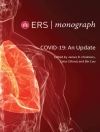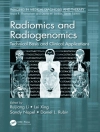The cerebello-pontine angle has always posed a challenge to the neurosurgeon, the otoneurosurgeon, and the neuroradiologist. Angle masses which are very small and difficult to detect frequently produce symptoms, but may remain silent while growing to exceptional size. The neuroradiologist must have firm knowl- edge of the clinical manifestations of the diverse angle lesions in order to tailor his studies to the patients’ needs. The majority of angle lesions are benign; thus successful surgery has the potential for complete cure. Angle lesions typically arise in conjunction with vital neurovascular structures, and often displace these away from their expected positions. Large lesions may attenuate the vestibulocochlear and facial nerves and thin them over their dome. Since the nerves often remain functional, the surgeon then faces the need to separate the tumor from the contiguous nerve, with preservation of neurological function. Depending on the exact location and extension of the lesion, resection may best be attempted via otologic or neurosurgical approaches. The neuroradiologist must determine – precisely -the presence, site, size, and extension( s) of the lesion and the displacement of vital neurovascular structures as a guide to selecting the line of surgical attack. Since the arteries, veins, and nerves that traverse the angle are fine structures, the neuroradiologist must perform studies of the highest quality to do his job effectively.
Thomas P. Naidich & Othmar Schubiger
Clinical Imaging of the Cerebello-Pontine Angle [PDF ebook]
Clinical Imaging of the Cerebello-Pontine Angle [PDF ebook]
Buy this ebook and get 1 more FREE!
Language English ● Format PDF ● ISBN 9783642712043 ● Publisher Springer Berlin Heidelberg ● Published 2012 ● Downloadable 3 times ● Currency EUR ● ID 6331095 ● Copy protection Adobe DRM
Requires a DRM capable ebook reader












